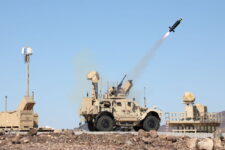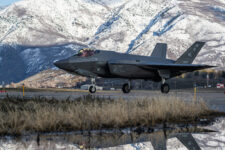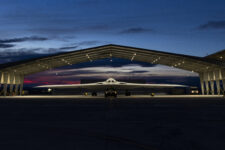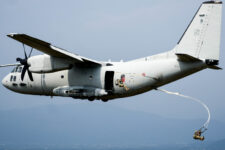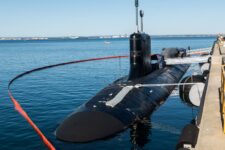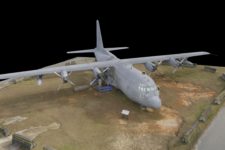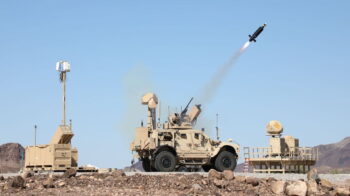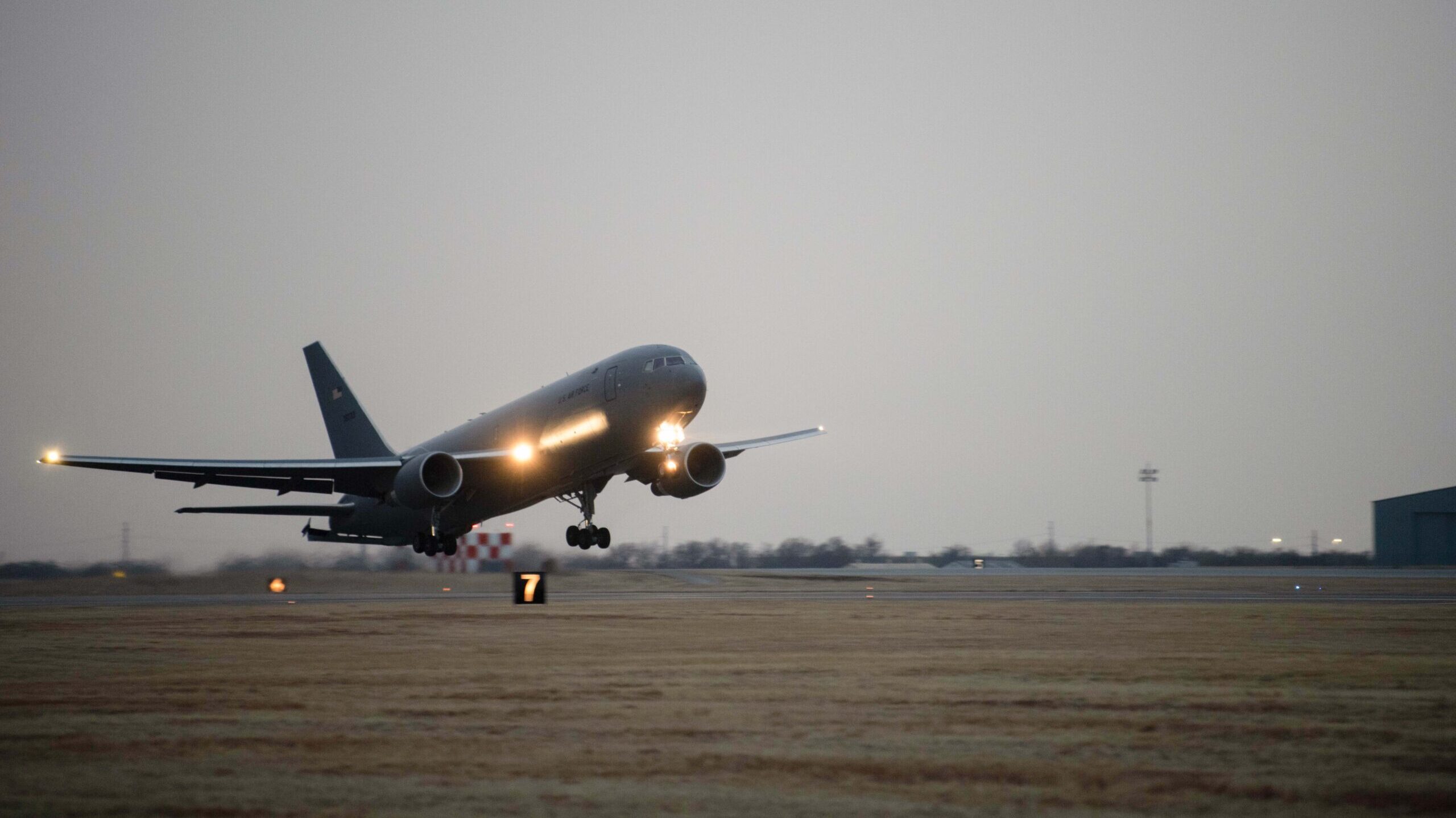
A KC-46A Pegasus tanker takes off March 17, 2022, from McConnell Air Force Base, Kansas, as part of the Air Mobility Command’s first KC-46 Employment Concept Exercise. (U.S. Air Force photo by Amn. William Lunn)
WASHINGTON — Boeing disclosed a whopping $2.8 billion loss on defense programs this quarter, led by significant cost overruns on the KC-46 tanker and new Air Force One, the company stated today.
Losses were sustained on KC-46, T-7A Red Hawk trainer, the Navy’s MQ-25 tanker drone, VC-25B — better known as Air Force One, when the president is onboard — and NASA’s Commercial Crew program, Boeing said in a news release. The overruns were “driven by higher estimated manufacturing and supply chain costs, as well as technical challenges” and “were also impacted by unfavorable performance on other programs,” Boeing said.
The KC-46 tanker and VC-25B accounted for the bulk of the overrun, with $1.2 billion and $776 million in losses respectively, Brian West, Boeing’s chief financial officer, said during an earnings call. All told, Boeing’s defense, space and security (BDS) sector has now incurred about $3.7 billion in losses since the beginning of the year.
Boeing CEO Dave Calhoun and West sounded a defiant tone during the call with investors this morning, stating that the defense market remains solid over the long-term and that 85 percent of the company’s defense portfolio is “doing pretty well,” according to West.
“We’re not embarrassed by [the cost overruns]; they are what they are. And we intend to deliver against these contracts and satisfy our customers,” Calhoun said.
“While current performance doesn’t reflect where we’d like to be for sure, we’re focused on driving execution stability,” West added. “These programs have an outsized impact on BDS margins and will be key to margin growth in future periods.”
Though many major defense contractors have been battered recently by COVID-19 related supply chain issues as well as ripple effects from Russia’s invasion of Ukraine, Boeing’s financial challenges are somewhat unique when compared to the other big name primes. During the 2010s, the company took on several fixed-price aircraft development contracts — including the KC-46, T-7, MQ-25 and VC-25B — that stipulate that Boeing is responsible for any extra costs incurred during the design and development of a new product. Such agreements a rarity in the defense world, where major development programs are typically funded under “cost-plus” contracts where the government takes on more financial risk.
RELATED: From shipyards to semiconductors, watchdog warns of Defense Industrial Base risks
While losses on Boeing’s fixed-price programs have been an unfortunate staple for earnings calls over the past several years, today’s charges were large in comparison to previously reported losses, which typically number in the hundreds of millions of dollars. The KC-46 has now incurred more than $6.8 billion in losses — charges that far exceed the value of its $4.9 billion development contract.
For the tanker, the biggest issues include parts shortages — which will persist longer than Boeing previously anticipated — and labor instability, which will also continue to be a problem, West said. For the VC-25B, those workforce issues are “magnified” due to the difficulty in getting workers the security clearances needed to work on the highly-classified presidential transport aircraft, which has led to schedule delays.
Boeing has added more than 10,000 workers across its commercial and defense businesses, but it will take time for the defense giant to overcome the “macroeconomic challenges” that have hit the entire aerospace industry, Calhoun said.
Raytheon, Tawazun sign term sheet to bring Coyote counter-UAS production to UAE
The US Mission to the UAE said that the term sheet signing was an “exciting step” and that the coproduction “strengthens the security of our countries and enhances our economic cooperation.”
“We’re not anticipating or suggesting the supply chain world is going to get much better in the near term,” he said. “We’ll continue to be challenged over the course of 2023.”
